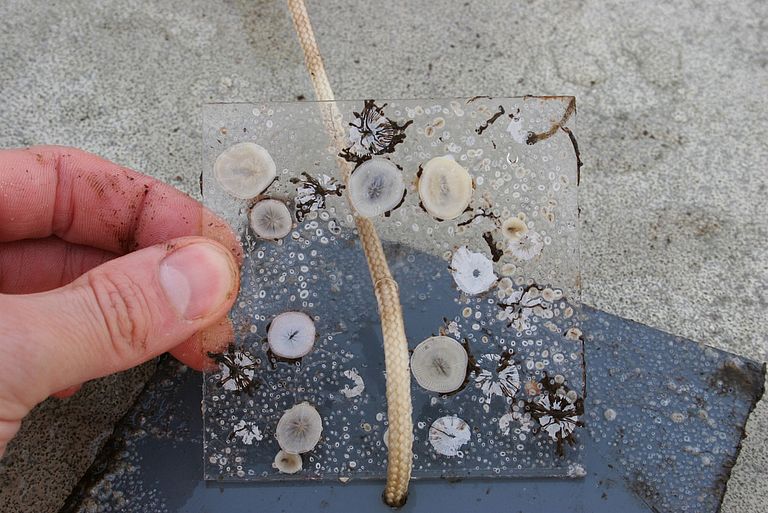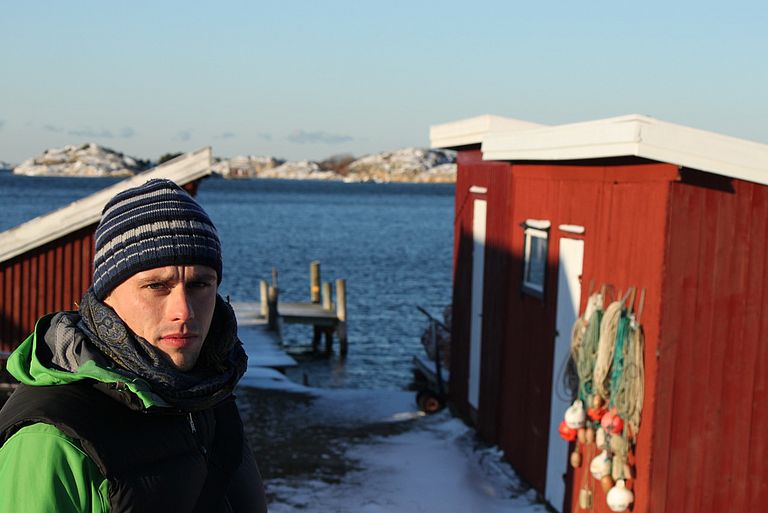Baltic Sea "Trains" Marine Life for Climate Change
Barnacles in Kiel Fjord show high stress tolerance to ocean acidification
Our oceans are turning "sour". But what does the so-called ocean acidification mean? Since carbon dioxide (CO2) emissions are rising worldwide, the ocean is absorbing more CO2 from the atmosphere. It reacts with seawater to form carbonic acid, thereby decreasing the pH level in the sea. In extreme cases this may also affect the calcareous shells of animals. What impact this development might have on certain organisms living in the ocean is investigated by scientists around the world. One of them is Dr. Christian Pansch, a marine biologist who - in his doctoral thesis at GEOMAR Helmholtz Centre for Ocean Research Kiel under the supervision of Prof. Martin Wahl – worked with barnacles (Balanidae) from Kiel Fjord and from the fjords of western Sweden. He found that different populations of a species are unequally well prepared for future environmental changes, depending on where they live. The results of the study are published in the journal Global Change Biology.
The special feature of Kiel Fjord is that the concentration of carbon dioxide is at times already as high as climate scientists predict for the open oceans in more than one hundred years. "The reason for this is the low buffering capacity of the less saline Baltic Sea and its summer stratification," explains Dr. Pansch. "In deeper layers, due to the nutrient supersaturation, organisms consume a lot of oxygen and produce carbon dioxide. There the CO2 accumulates, the pH is not buffered by the fresher Baltic Sea water, and this acidic water upwells occasionally." In Kiel Fjord, for example, strong southwesterly winds push the surface waters out of the Fjord and the acidified water from the deep comes to the surface. Thus the environmental conditions vary extremely for many shallow water organisms, not only in terms of salinity and temperature, but also with regard to the pH level of the water. Therefore, some organisms, such as barnacles, are occasionally exposed today to the predicted environmental conditions of the future.
In their study, the researchers exposed barnacles to different CO2 concentrations. They compared barnacles from Kiel Fjord to a population of chemically stable archipelago of Tjärnö off the west coast of Sweden. They recorded growth, reproduction, mortality rate and appearance of the animals. "The animals from Kiel Fjord, which have to cope with fluctuating CO2 levels anyway, reacted quite insensitive to the future scenarios," says Prof. Dr. Martin Wahl, co-author of the study. "The shells of barnacles suffered somewhat at very high concentrations, but those were purely exterior characteristics," says Christian Pansch. Growth, reproduction and mortality rates showed no changes.
The stress tolerance of the Swedish barnacles was found to be relatively low, in contrast to that of their Kiel counterparts. "Simply because the barnacles from Tjärnö do not live under such varying environmental conditions, they are probably much more susceptible to change," said Professor Wahl. In the experiments, they were no longer growing at their usual rate, and more individuals died subsequently.
Dr. Pansch summarizes: "In comparison with the Balanidae from Tjärnö, the barnacles from Kiel Fjord are much better trained for the future." At the moment, the biologist works at the University of Gothenburg in Sweden, but starting in October of this year, he will again conduct research in the group of Prof. Dr. Wahl as part of a post-doc position funded by the Helmholtz Association. The team will then investigate to what extent such fluctuations of CO2 and oxygen concentrations occur in different habitats of the North and Baltic Seas, and the extent to which this variability prepares the organisms for the oceans of the future.
Reference:
Christian Pansch, Iris Schaub, Jonathan Havenhand, Martin Wahl: Habitat traits and food availabil-ity determine the response of marine invertebrates to ocean acidification. Global Change Biology (2014), http://dx.doi.org/10.1111/gcb.12478
High-resolution images:
The small barnacles from Kiel Fjord are well prepared for climate change. Photo: Christian Pansch, GEOMAR
An experimental plate is used to show how the barnacles react to extreme environmental conditions, such as ocean acidification. Photo: Christian Pansch, GEOMAR
Dr. Christian Pansch,lead author of the study, has also investigated a barnacle population in western Sweden. Photo: Giannina Hattichh
Contact:
Jan Steffen (GEOMAR, Communications & Media ) Phone: +49 431 / 600-2811, jsteffen(at)geomar.de




